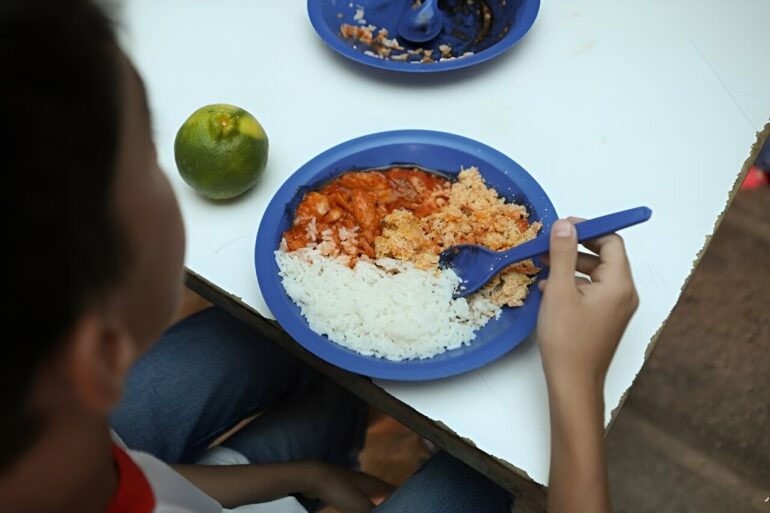By analyzing samples of flour and rice stored in homes in Ribeirão Preto, in the interior of the state of São Paulo (Brazil), researchers from the University of São Paulo (USP) found the presence of high levels of fungal toxins (mycotoxins). The study is published in the journal Food Research International.
As the authors point out, dietary exposure to mycotoxins can trigger a range of health problems, especially in children and adolescents. The data, therefore, reinforce the importance of storing foods such as grains and flour in dry places and protecting them from insects to avoid the risk of contamination.
“There are more than 400 toxins that fungi produce to defend themselves or to interact with other organisms. Six of these substances, which we call the superpower girls, require more attention at the Pirassununga campus because they’re carcinogenic, immunosuppressive, or act as endocrine disruptors [cause changes in the body’s hormonal balance]. It’s something that needs a lot of attention because of its harmful effects on health,” says Carlos Augusto Fernandes de Oliveira, professor at the Faculty of Animal Science and Food Engineering (FZEA-USP), at the Pirassununga campus, and coordinator of the study.
The six toxins of concern were found in all the food samples analyzed: aflatoxins (AFs), fumonisins (FBs), zearalenone (ZEN), T-2 toxin, deoxynivalenol (DON), and ochratoxin A (OTA). In the case of the mycotoxins FBs, ZEN, and DON, the levels were above the tolerance limit set by the health authorities. This study was the first in Brazil to use biomarkers to characterize the risk associated with mycotoxins in the diet of children and adolescents.
Oliveira explains that aflatoxin B1, discovered in the 1960s, is the most potent natural carcinogen known. The substance damages the DNA of animals, causing genetic mutations that can lead to the development of liver carcinoma. There are also other effects, such as immunosuppression, reproductive problems, and teratogenesis (when pregnant or lactating women transfer the toxins to the embryo, fetus, or child, causing health problems).
“There’s no substance known to man in nature that has the carcinogenic power of this mycotoxin, only rare exceptions created in the laboratory, such as dioxins,” says the researcher.
Deoxynivalenol, which was found at high levels in the samples analyzed, although not carcinogenic, can lower the immunity of contaminated people. “It also has an effect on the gastrointestinal system. In animals, for example, it causes so much irritation that they regurgitate. That’s why it’s commonly called vomitoxin,” he says.
Fumonisin B1 is considered a possible human carcinogen and can cause esophageal cancer and other hepatotoxic problems, as can ochratoxin A, another potential carcinogen. Zearalenone, found at high levels in the food samples analyzed, has a structure identical to that of the female hormone estrogen and can cause problems associated with excess estrogen in the body (hyperestrogenism).
“So they’re toxins with heavy consequences. Unlike lead or other chemical contaminants such as bisphenol [found in some plastics], these mycotoxins are not cumulative. However, they do have a progressive effect. This means, for example, that with exposure to B1 molecules, at some point, it’ll no longer be possible to repair the DNA damaged by the mycotoxin. This is when cancer can develop. That’s why we’re concerned about children and adolescents, who tend to be more sensitive to toxins in general,” he says.
The analyses were carried out using ultra-performance liquid chromatography coupled with tandem mass spectrometry (UPLC-MS/MS, a method that allows different substances in a mixture to be distinguished on the basis of molecular weight). The 230 food samples analyzed were available for consumption in the homes of 67 children, including 21 preschoolers (3 to 6 years old), 15 schoolchildren (7 to 10 years old), and 31 adolescents (11 to 17 years old).
The group is carrying out a second phase of work to determine the level of contamination further. Urine samples have been collected from children and adolescents, and the researchers are in the process of analyzing the results.
“By analyzing biomarkers found in urine, it’s possible to assess exposure to mycotoxins since the excretion of biomarkers correlates well with the ingestion of some mycotoxins. This will allow us to anticipate the potential effects of contamination,” Oliveira said.
More information:
Sher Ali et al, Exposure assessment of children to dietary mycotoxins: A pilot study conducted in Ribeirão Preto, São Paulo, Brazil, Food Research International (2024). DOI: 10.1016/j.foodres.2024.114087
Citation:
Analysis of flour and rice shows high levels of harmful fungal toxins (2024, May 2)



